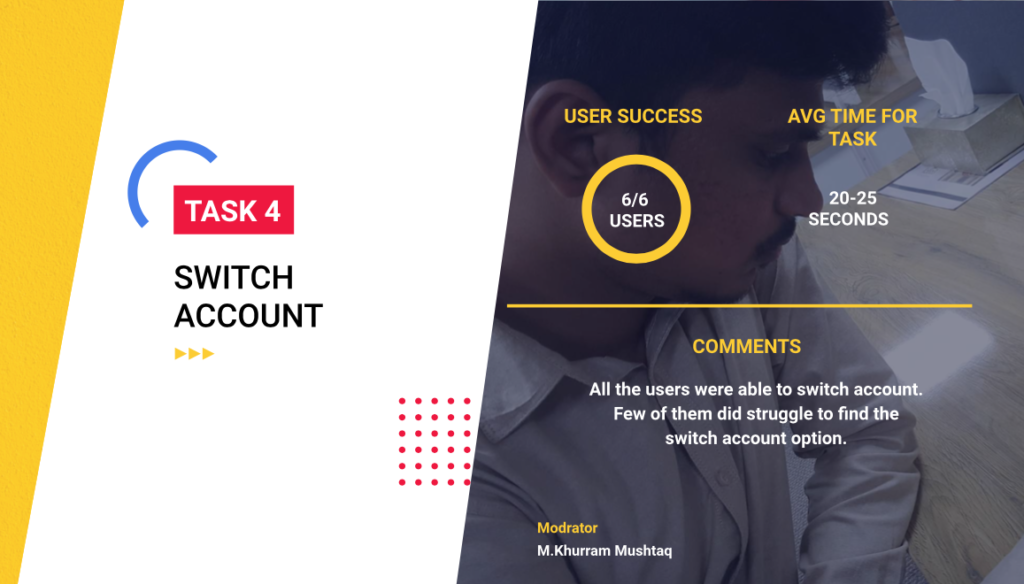 ×
×
 ☰
☰
“Because it Leads to the Right Products”
Usability testing is the practice of testing how easy a design is to use with a group of some organic users.
The goal of usability testing is to understand how real users interact with your product and make necessary changes based on the results before it goes for development.
When you watch how users behave while they try to execute given tasks, you’ll get vital insights into how well your design/product works. Then, you can leverage these insights to make improvements.
The basic objective of the Usability Testing include;
Conducting usability tests at the right time during a project ui/ux design phase is vital to get desired results.
Usability testing has a big influence on your e-commerce website’s performance(for example Bigcommerce website design or WooCommerce designer etc)and success. Good usability encourages visitors to interact with your offerings and promotes in the growth of your e-commerce site such as WooCommerce website development and Bigcommerce development company)

Usability testing at the earliest prototype that can even on paper, you can gauge user reactions well before you begin development. This saves projects from wasting a huge amount of valuable hours trying to fix user experience flaws after they’ve already been coded and deployed.
It will help if your product is feasible to execute or not is very helpful.
It also helps to identify potential issues at earliest , so you can make smarter product decisions and iterate on changes quickly as this is in design mode not developed.
Usability testing also helps product managers to understand exactly what needs to be built.
Unambiguous understanding of the product’s purpose, function and features allows product managers to equip designers and developers with clear direction.
It also allows teams to develop accurate timelines and cost estimates.
By understanding what features and functionality — as well as changes — are needed in advance, you can streamline your entire workflow across teams saving thousands of hours in the process.
One of the big advantages of usability testing is that you’ll save not only time, but also money.
Just imagine the costs associated with development hours, or with an issue identified late in the product that needs to be corrected quickly and retroactively.
No doubt it’s always better to build something to an ideal function than to “fix it,”
Usability testing also helps identify which product benefits and functions are most desired by the user and most critical to business success.
Prioritizing development decisions based upon actual data and feedback, rather than playing a guessing game, allows you to make smart decisions from the get-go.
Smart decisions mean you can avoid expensive and large-scale feature changes down the road, building only what works from the beginning.
Usability testing is doable for projects of almost any budget. You can solve the most pressing usability problems with a single round of testing on only five organic users.
The savings are clear. In the short term, you save money by fixing UX problems before they happen. In the long term, your business will benefit from usability testing by helping customers achieve their goals better than the competition.
If you are going to work on any product of course you have done some research to verify whether the product is a good idea by user testing, it doesn’t matter how prepared you are, sometimes what your research or study doesn’t match what actual users expect.

One of the core purposes of usability testing is that it allows you to validate product plans using real data with real evidence.
According to a survey up to 64% of product features that are built are never or rarely used. To avoid wasted resources, it’s absolutely essential to confirm the features you plan are really required by the users. By digging hard data about what works and what doesn’t work through usability testing allows us to create product roadmaps with real confidence.
Usability testing serves as a key indicator of a product’s success in the marketplace. You can validate your assumptions and determine whether users will find value and utility in your product.
You can identify any red flags or issues in advance, rather than after you launch, and avoid costly or upsetting problems.
Usability testing also allows you to see how easy or difficult your product is to use, providing clues about its potential adoption rate.
No one will use your product if it’s not easy or intuitive or if it doesn’t solve the problem it’s intended to. User testing allows you to confirm all this in advance, so you can go to market with confident expectations of how your product will perform.

Source: Folio3